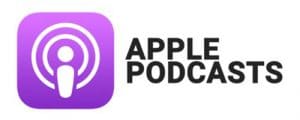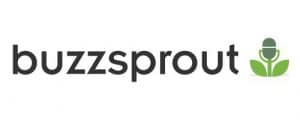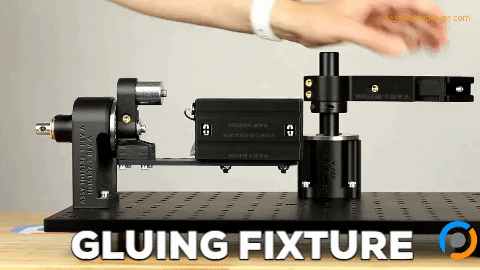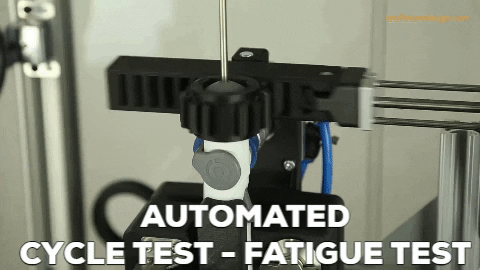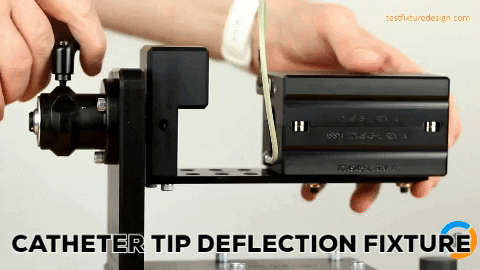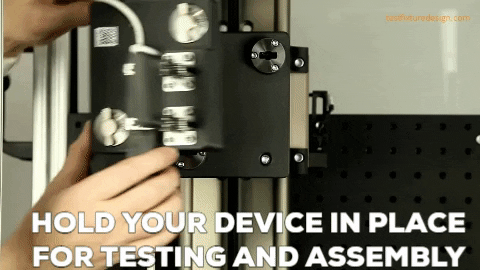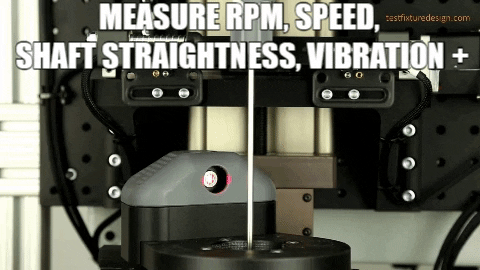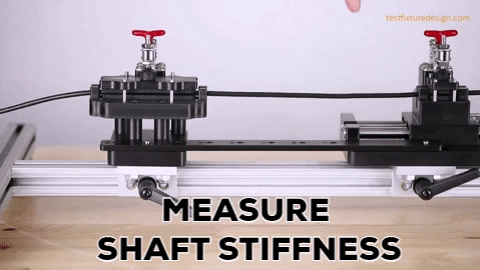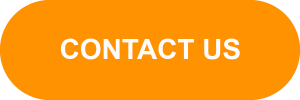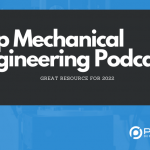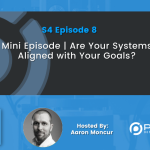Russ Angold | Exoskeletons, VR Fitness, and Starting Hardware Companies
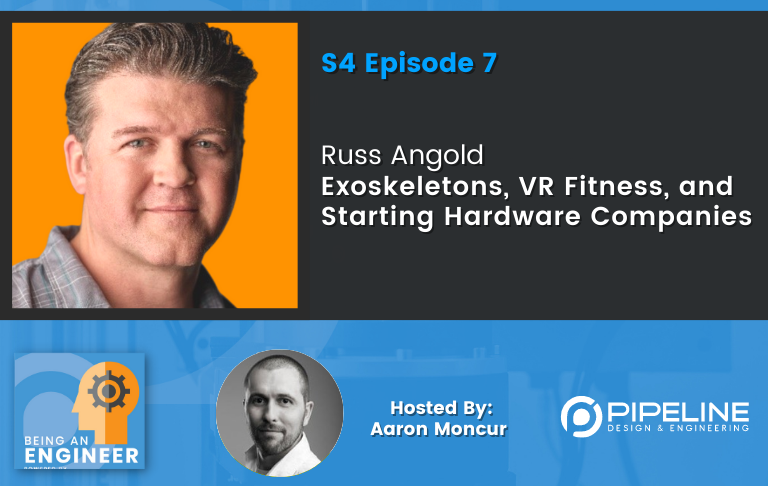
Who is Russ Angold?
Russ Angold holds a bachelor’s degree in engineering from Cal Poly and is the co-founder of Ethereal Matter, as well as other hardware startups. Join us as we discuss best practices for starting a hardware startup, and explore the early days of exoskeleton to enhance human mobility.
EXPAND TO VIEW EPISODE TRANSCRIPTION
SUMMARY KEYWORDS
exoskeleton, engineers, people, problem, work, walk, early, engineering, test, grant, space, machine, power, rewarding, hardware, idea, darpa, called, product, technology
SPEAKERS
Aaron Moncur, Russ Angold
Aaron Moncur 00:00
A few weeks ago, we recognized an engineering student named Jorge. After his girlfriend Adriana told us how big a fan he is of the show. Hearing afterwards from Jorge about how much it meant to him was one of the more rewarding experiences I’ve shared with our listeners. Here’s what he said. Words cannot begin to describe how grateful and appreciative I am of both you and Adriana for gifting me such a memorable and amazing moment, I still can’t believe it. Well, Jorge, it was our pleasure. And he gave us an idea. Live today, we are introducing a new program to the being an engineer podcast to recognize engineers who excel in their field. We’re calling it the being an engineer Circle of Excellence, and we hope it will be a way to more fully realize the mission of the podcast as a tool through which engineers learn about and connect with relevant people, resources and opportunities. We also hope it will be a way for you the listener to experience the joy and excitement associated with recognizing worthy peers and being recognized by your peers. To submit a nomination, go to Team pipeline.us forward slash excellence and fill out the form with the name of your nominee and a short description of what makes him or her deserving of the award. We here at the podcast will review the submissions and select winners. Those winners will be announced and recognized on the show and will receive some complimentary being an engineer podcast swag. The program is live right now go to Team pipeline.us. Forward slash excellence and give a deserving engineer the gift of a memorable and amazing moment of their own.
Russ Angold 02:06
That part’s frustrating, but I think that makes that final moment at the end so much more rewarding when you finally do get it.
Aaron Moncur 02:13
Hello, and welcome to another episode of The being an engineer Podcast. Today we are speaking with Angold who holds a bachelor’s degree in engineering from Caltech and is the co founder of a Ethereal Matter l where we’ll talk about later in more detail. Russ, thank you so much for joining us on the show today.
Russ Angold 02:47
Oh, no problem. Happy to be here. I do have to make a correction. I didn’t go to Cal Tech. I went to Cal Poly California Polytechnic State University. A little different. Thank you
Aaron Moncur 02:57
for thank you for correcting me. I had the written down and I totally messed up. That was my mistake. Thank you for the correction. No problem. Starting off to a great start here, aren’t we? She’s? Yeah. All right. Well, Russ, how did you decide to become an engineer?
Russ Angold 03:14
You know, I probably didn’t actually know what an engineer was early on in life. But as a kid, I really enjoyed working with my my grandfather, you know, he would build things he was in the construction space. He was also a machinist. So I’m a mechanic. And so just kind of be a general tinkerer and DOER of all things. And so I learned a lot from him as a young kid. And then I just always had this desire to understand how things work. So I take apart all my toys, and figure, Figure out how they worked and then put them back together. And you know, I like to joke with people I said, the differences after I got my engineering degrees. Now I can put them back together. And there’s typically leftover parts and leftover
Aaron Moncur 04:00
screws. Yeah. I know exactly what you mean, I was always that way as a kid as well. I didn’t have a machinist for you know, in the family or anything like that. But I love to take apart toys and see how they work and try and put them back together doorknobs you know, just anything mechanical, things like that. I think that’s kind of a like, I hate to say it can’t be taught. But I think there are people who just innately have that desire or passion to understand how mechanical things work. And then I’ve I’ve certainly I’ve come across other other people, some of which are engineers as well who did just, I don’t know, they don’t they don’t have that same, like organic desire or curiosity about them. It’s interesting how that happens.
Russ Angold 04:47
And I think there was that and there was also like, whenever there was chores to be done around the house, I was always trying to figure out a way to do it more efficiently. So it’s like, oh, wait, can we make something to make this like less labor intensive and Every signing because I have six brothers, so like, some of the brothers would get started. And I would like, go off and try to figure out a way to make it easier on us. And sometimes it’ll work out. And sometimes they finished before I could figure out a way to make it easier. So yeah, it’s pretty funny.
Aaron Moncur 05:14
That sounds to me like a process engineer right there. That’s great. That reminds me of when I was I think it was in second grade. And my teacher, I think she just wanted to keep me busy for a while, maybe she didn’t have something to do hadn’t prepared her lesson plan, or I don’t know something. But she gave me this stack of like, I like 50 or 100 pieces of construction paper, you know, like the purple and red kind of thing, construction paper using elementary school. She says, I need you to fold all of these in half. And so I said, Okay, I’ll do that. So she went away. And I was looking at this thing and thinking to myself, it’s gonna take forever to like, pull each one of these apart and fold them all in half. So I just took the entire pile, and I folded it in half. I went back to it here. It’s done. She’s like, No, that doesn’t work. Anyway, I didn’t get off the hook. I had to go back and take them all off. But, but I understand what you mean by like, always trying to find ways to make things easier and faster.
Russ Angold 06:14
Right. Yeah. Right. Always looking for that edge. Right?
Aaron Moncur 06:17
Yeah. Well, you co founded a company called Ekso. bionics where you engineered solutions to it, and I’ll quote here rethink current physical limitations and achieve the remarkable. Can you tell us a little bit about Ekso? And in some of the ways that you helped people achieve the remarkable.
Russ Angold 06:38
Yeah, so Ekso Bionics was a, in the name an exoskeleton company. The funny thing is, is that’s not the first name that company had. When we started the company back in 2005. Like the majority of the world did not know what an exoskeleton was. It wasn’t it wasn’t until I think the Iron Man movie came out where people started to know what an exoskeleton was. So early on, we were called Brookley bionics, I guess because you know, people still remember the bionic man TV show. So the Yeah, what we were focused on there early on, the technology came out of a DARPA program. So for those that don’t know, DARPA is the Defense Advanced Research Project Agency. So they fund far out stuff, right. So they were funding us to try to develop exoskeletons for soldiers to to remove the, and reduce the amount of injuries that they were seeing due to load carriers, because some of these soldiers carry a tremendous amount of weight. And they were seeing a lot of knee and back injuries. And so that’s where I got started. That was a project at UC Berkeley, and I came in to work on that one of my brothers. He had gone on to be a Navy Seal, and we made a deal. When we were kids, I said, You go be a Navy SEAL. I’ll be an engineer. And someday, you know, I’ll make you cool stuff. And so no, yeah. So when the opportunity came to, when the opportunity came to work on the exoskeletons, I was like, Oh, my God, this is perfect, right? This is totally for him. So. So it was a dream come true. I literally quit my job without even showing my brother that I was currently working on and came back up to the Bay Area to start working on the project. And, you know, there was a couple interesting things that happened. One, I finally showed my brother that video, which he was like, wow, you know, that thing is too slow. It’s too loud. It’s too heavy, we’re never going to use it. So you know, kind of on the life lesson, if you’re going to, if you’re going to bet the farm on a technology, you should really understand what your customers are looking for in that space and make sure it aligns with what they’re looking for. And the second thing that happened was, my brother is actually in an accident and broke his neck. And so I remember getting a call from my mom. So we flew across the country, to go see him in the hospital thinking about how we could use the same exoskeleton technology to get him up and walking again, walk into his hospital room, you know, saying Hey, brother, I’ll get you up and walk. And again, I sketched out some ideas. And it was interesting, because I knew nothing about spinal cord injury at the time. And he was like, I can walk just fine. I just can’t move my arms. So he had what’s called central cord syndrome syndrome where you damage the outside nerves in your spinal column which affect your it’s like an upside down tree. So the outside up top affects your arms more than your legs. So the central cord was fine. So he could still walk but he couldn’t use his arms. But I’m happy to say he is. You know, he was fortunate and has completely recovered and is doing great. Never anything good. But it took me years of rehabilitation and the takeaway for us was, he was fortunate because it was his arm so he could, you know, continually do rehab a small task and work himself up to bigger and bigger Test as he got stronger. But that’s really hard to do if you lose the ability to walk, whether it’s spinal cord injury or stroke. And so that’s where we came in with medical exoskeletons really seeing the value where he could provide someone that level of assistance where they could do walking rehab. And as the user got stronger, the Exo could back off on its power. And eventually, you know, they could walk out of it. And people are doing that now, in the case of strokes. So yeah, it’s interesting how that all unfolded in a matter of weeks. But
Aaron Moncur 10:33
thank goodness, he’s okay. Incredible story. Thank you for sharing that. So when when, actually, let me back up just a little bit. I’m really curious, the the DARPA funding, how does that work? Is that like a huge process that you have to go through the takes forever, and you have to hire consultants to help you navigate the government bureaucracy? Or was it, you know, fairly straightforward.
Russ Angold 10:58
It’s definitely a competitive process, any of the government grant funding process is competitive. We started the initial winner of that grant was UC Berkeley and Professor Cazal, Rooney. So Nate, neither were the other co founders of XL, we were consultants to the lab, trying to help make this prototype more commercial. So we were working side by side with PhD students trying to, you know, take these ideas that they had, and the work they had done and try to turn it more into a commercial type product, right? Bringing stuff we knew from industry, into the into the recipe, so to say, and so that we didn’t have to that was through UC Berkeley on that funding. Now, when we kind of went a separate path and went to a we went to a much lower powered path for our exoskeleton designs. So the Blake’s, which was the exoskeleton we were working on at Berkeley, that thing used about three to five kilowatts of power, depending on how fast you were going. So a tremendous amount of power, right? So I see gas engine running on the back running hydraulic pumps. And yeah, it was it was kind of crazy, as amazing as the world’s first untethered power exoskeleton back in 2005, but also not not a viable path going forward. So our next exoskeleton used, XO hiker used about two watts of power. And so that’s when we went and showed that back to DARPA, but that didn’t align with what DARPA wanted to do. DARPA wanted a big powered Ironman suit. So we actually got down selected, they said, Okay, we’re not interested in that path. If you guys are interested in that, you can go do it on your own, but that’s not where we want to go. So they selected another company named Sarcos, which is still in the exoskeleton business today. They pick them to carry forward with them. And we actually went our we stopped getting the DARPA funding, but went after some other NSF National Science Foundation funding, and some other things to go talk more towards that medical applications based on this new low powered exoskeleton. But back to your question, yes, there’s a there’s a lot of work. It’s, it’s kind of weird to navigate some of the grant space, there are people out there that can help you. So if you’re looking for that, that path, it’s definitely a worthwhile path to really get some, you know, hard technology out, it’s, you know, it’s essentially free money, right, you’d have to work for it, you have to provide results. But it’s a great way to get an idea off the ground, especially if you’re doing you know, kind of that foundational or or early research where you’re not really ready to take anybody else’s outside funding, you’re a little too early for commercial or venture funding. But that’s, that’s the purpose of those some of those organizations is to try to fund those crazy ideas to see if there’s a they’re there. Right? How do you get to that point where you think like, Hey, this is a viable future. And that’s what they’re there for?
Aaron Moncur 14:18
Yeah. It seems like you really have to commit for one of those grants. I mean, you could spin correct me if I’m wrong, but months, preparing for one and submitting it and then not be selected. Right.
Russ Angold 14:31
Yeah, I mean, I encourage anyone that is going to go down that path to try to connect with the the pi’s. or whoever’s in charge of that area of the granting organization like NSF has a workshop every year, the program managers or DARPA does or whoever the granting organization typically has some open house event where you can go and meet some of these project managers. And I always encourage people out Um, before you get started in and writing a grant and just, you know, throwing it over the wall without kind of talking to anybody, at least email, have a phone call with somebody, tell them what the idea is see if that fits with what they’re looking to fund. Or go try to meet at one of these conventions or conferences where they’re all getting together. And they’re talking about, you know, the ideas they’re looking for, and the technologies they’re looking for. Just go have an interaction with somebody, because at the end of the day, you know, people work on relationships. And if you can have at least some sort of relationship and understand what that program manager is really looking for, and how that fits with the technology you’re providing, you’ll have a much better chance of success and getting, getting that grant across the line.
Aaron Moncur 15:44
That’s a great pro tip. You mentioned PI’s earlier, what does that stand for?
Russ Angold 15:48
Sorry, the PI is Principal Investigator. That’s typically who’s running the grant. And then the grant side, you have the program managers, the PMS. So yeah, the PIO is typically whoever is the, you know, the lead on the company side, that’s going to be writing that grant.
Aaron Moncur 16:05
Okay, got it. Great. Well, you are currently working at and the co founder of a company called ethereal matter. Can you tell us a little bit about the ethereal matter and how it will transform Home Fitness workouts?
Russ Angold 16:21
Yeah, so I’ve known Scott summit for oh, gosh, maybe 15 years going on 15 years. We did some stuff together early on when I was still at Expo. And then when I stopped working at an expo, I saw some of the stuff he was doing, which this is all Scott’s brainchild, I just came in to help with some of the the engineering design, but he
Aaron Moncur 16:49
and Scott, sorry to interrupt you, Scott Summit is an industrial designer who we had on the show a few months back.
Russ Angold 16:55
Right, right. So Scott, came up with this concept, which I think is truly cool, right? It’s basically how do you have a you know, a full full on immersive physical experience in a VR environment? You know, not just put on the headset and walk around your room, but how do I climb stairs or, you know, interact with physical objects and do all these all sorts of other things. And the, I mean, the machines come a long way. I don’t know if you’ve seen the latest machine, but the machines come a long way from the early days. And now the experience is pretty cool. I was in there the other day flying around a castle in the ornithopter right flying through and like you forget that you’re working out. So the whole idea the whole concept is like gaming Swan, I have two teenage boys, they love to game. But typically when they’re gaming, they’re sitting in their chairs, and they’re not getting a lot of exercise. So how do you how do you make gaming so fun that people will want to be in there and getting exercise at the same time and they’re gaming in this in this VR fitness machine which and it could be anything from just, you know, actually getting exercise to escapism like going paddleboarding through Tahoe or whatever just taking a break from the real world but it’s it’s pretty cool once you get inside of it and start moving around and feeling that feedback and really interacting you you kind of detaches you from the real world for that moment and you’re transported somewhere else and you get to have a cool experience.
Aaron Moncur 18:33
That’s amazing. Is this going to be for retail sale? Or would it be you know like in a gym that you might have a membership to or something like that?
Russ Angold 18:44
Most likely it’s gonna start in gyms because it is a bigger piece of equipment. So starting in gyms or we’ve talked about other locations like movie theaters are other things I was thinking the other day like go to bed a great partnership did like team up with avatar to where you could stick this thing in the lobby lobby of a movie theater where someone could actually go have an experience, right an avatar experience and purchase it and you know, fly it around and do it all that stuff and then go see the movie. Like there’s some really interesting times you can do with with media. Another thing so yeah, most likely not not targeted at the direct consumer at first. It’ll be more in the gyms and other applications where multiple people can use that same machine.
Aaron Moncur 19:31
I think that’s an awesome idea. I really love surfing. I grew up in Hawaii. But I hardly ever get to do it anymore. Because I live in Arizona, not too many oceans here. But if I could duplicate that experience, I mean, I don’t need to be in the ocean necessarily, right? If I could duplicate the sensory experience of it. That would be amazing. I would do it every day. And it’s incredible exercise. So I love the concept there. How So, if you can speak about this, how far away are you guys from, you know, having your your MVP ready to launch wherever that might be.
Russ Angold 20:09
I think we’re really close. I mean, the machine has gotten tightened up over the last couple years, we’ve added some features subtracted some features that I think we’ve finally gotten to that sweet spot where, you know, the mechanisms and the structure and what it can do ties nicely with what we’re seeing on the on the video side and the virtual world side. And so it’s, it’s, yeah, I think we’re, we’re there. And now it’s just a matter of exposing it to people and seeing if we can get some interest.
Aaron Moncur 20:43
So amazing. Very cool. Well, good luck with that. What have been a few of the most difficult technical challenges that the engineering team has had to solve and how have you overcome those challenges?
Russ Angold 20:58
For theory, Oh, yeah. So the challenge is always cost, right? So there’s a couple things right. So anytime I think ethereal. And so when you’re dealing with humans, you have the variability of humans. So not only in size, and shape and personalities, all those things come into play. And so how do you? How do you interface well, with a human is a very challenging thing. So like, on the exoskeleton side, it was like, hey, well, how do you make it a one size fits most exoskeleton that will be comfortable for all these different body types sizes, like everything, right. So that’s always a challenge. And even on the material side, it’s, you know, you have this machine that you have to, we tend, we actually have hand grips that you hold on to. So it’s easy, you’re not like wrapping the machine around the user, like an exoskeleton, it’s more like a, I don’t know, an external thing that you’re you grab the end, effectors, right. So your your wrist, your your, your hands are grabbing the grips to interface, and then there’s the interface at the feet. And then we have to track everything. So we make a real avatar view in that space. So when you’re looking around, you actually see yourself. So how that interface works, and making it as transparent as possible, right and as natural as possible. That’s the other challenge when working with humans is any disk continuity, or anything that seems like not natural. Humans are very, they’re very quick to pick up on like a blip or something that doesn’t feel right, right. Like you’re very sensitive to things like oh, that that’s kind of off that feels off or you feel like a little glitch like, you notice those things. So everything has to be super transparent and super smooth. Otherwise, you’ll ruin the experience, especially in the case of ethereal where you’re, you’re flying in this machine and flying around. And if if like the arms were out of sync with what you’re seeing, like it would scramble your brain, you’d be like what’s going on? Right? What’s happening, I’m flapping down, but the wings are going up. So all those things have to be very well tightly coupled, and, and transparent to the user to make that that experience as real as possible.
Aaron Moncur 23:19
Yeah, that makes sense. Scott, Scott, Russ, it seems like you really enjoy the the startup phase of a company, is that fair to say?
Russ Angold 23:32
Oh, absolutely. I love the I love the mass of a startup like the early the early days, put it like that early days where like, you don’t know exactly what the product should do. You don’t know exactly who your customers are, you don’t know what the pricing should be like. So you’re figuring everything out? And there’s no right answer. And it’s like this crazy multivariate problem that you’re trying to wade through and figure out on the fly. I actually really enjoy that part of the process. And then once you kind of get through it, and you start having a business that’s like, Oh, it’s a commercial business. And here’s our sales. And you know, here’s what we need to do. There’s a very clear product roadmap, there’s a very clear production roadmap, that’s less interesting, because like, you know, all that all that fun stuff is gone. And then it’s more like turn the crank type of engineering, which is less of an interest to me, I really like trying to solve those really hard problems, like as an engineer, you just like solving hard problems. That that I think, is one of the most rewarding things to do. And so, yeah, the startup messes is where I like the early days of the startup masses were like God, right.
Aaron Moncur 24:45
Have you ever found that to be a problem that intrinsically the most talented engineers are the ones who want to be solving the hard problems which often come at the very beginning. And then when it’s more like sustaining engineering Maybe not all, but some or maybe a lot of the very talented engineers get bored and leave. And maybe what’s left is the engineers who are like the B or the C level engineers, have you experienced that or not so much?
Russ Angold 25:18
Not so much. I think, like, as a company, I think you can constantly reinvent yourself like at XO, right, there’s, you know, you have your pivot. So we started as a military type of exoskeleton for load carriage that we pivoted to medical, then as we’re going through that, and that starts to become clearer and more defined and turning more into that turn the crank type of engineering, then it’s like, Okay, what else can we do? Right? And so, then you switch gears and go after the Industrial and construction space, right? And try to reinvent yourself there and go after new challenges and new spaces. So I think you can always challenge those types of engineers and companies like that’s, that’s what you should be looking for is okay, once once you kind of have a that product roadmap kind of defined for whatever, that whatever line you were working on, it’s like, okay, well, what’s, what’s next, right? What should you be doing next with that, that group of engineers that just got through all that, or, you know, they don’t really want to work on the sustaining part of it. Right. And they’re, they’re typically those engineers aren’t built the same, right? There’s, you have a different skill set, like sustaining engineers, manufacturing engineers, the people that live and breathe that, like they have a very, very awesome skill set. And they love what they do and that space, and it’s very different than some of these early engineers that are kind of trying to figure out these hard problems. And there’s no real structure, right? They work really well in an unstructured environment. So you need both types, right? And then it’s just a challenge for management to figure out how to keep keep everyone happy and keep them moving forward. Yeah,
Aaron Moncur 26:54
well said. Well, I’ll take a very quick break here and share with the listeners that Team pipeline.us is where you can learn more about how we help medical device and other product engineering or manufacturing teams, develop turnkey equipment, custom fixtures and automated machines to characterize, inspect, assemble, manufacture and perform verification testing on your devices. And today, we’re speaking with Russ angled, Russ, can you think of a major success? And conversely, a major fail that you have experienced in your career and kind of what you took away or learn from each of those situations?
Russ Angold 27:37
Oh, yeah. Because there’s been there’s definitely both and they happen frequently. So I think the like The Matrix assessment career was getting Ekso Bionics to a place where we were providing those exoskeletons to individuals had lost that ability to walk. So there was nothing more rewarding than seeing someone that you know, at some point, a doctor and told them, you’re never gonna walk again. And they come in, and maybe there’s, they have their family or friends there. And they get in that device, and they get up and take their first steps. That was always a fantastic moment for me, right? Because you could just see it, and then that someone or someone in long line, I told them, they’re never gonna walk again. And in that moment, they’re walking again. And that’s just that, that’s just the first step in their in their recovery in their rehab. But it’s kind of them like, you know, sticking their finger to whoever told them that, you know, that was it for them. So that was always a very rewarding, a rewarding moment for, for me personally. Seeing that. So that that would I would put that in the category of successes, for sure. In terms of failures, man we have had all the time. And the one benefit we had, especially in the exoskeleton space was we are I guess we have this amazing sensor suit called a human that can give you real time feedback if something feels good or feels feels bad. And so when we were trying out ideas or concepts, we would try to prototype the roughest thing you could get right? The lowest fidelity that you could get to directly try out a concept and strap it on to somebody to give you that. Is this the right path? Or is this the wrong path? And we are fortunate again, that humans are really good at discerning that the worst answer was if you got to, you know, no thumbs up, no thumbs down, but like, Oh, you got to make the prototype better, because we don’t know which way this is going. But we would our method was try to fail as fast as possible. Like, hey, we have a crazy idea. All right, go build it in the shop as quickly as you can. I don’t care what it looks like. I don’t care like it does. Oh, whatever. Yeah, whatever you can scrounge together Just go and test it. And it has to be like it has to replicate whatever feature you’re you’re trying to accomplish but or function you’re trying to accomplish, but build the ugliest, quickest thing you can and test that out. Because it’s much easier to fail like that versus, you know, designing for six months and then having a failure. And looking back and like, wow, how did we get here? The other one, I would say, was talking to the customers like, that was literally, like I said early on in the podcast, like not talking to my brother before stepping on to Expo had I talked to my brother before, and showed him that video, I probably would have never gotten the exoskeleton space. So you know, maybe it’s a blessing in disguise that I didn’t show him the video. But again, I would say, showing whatever technology you are really understanding the customer and what they’re wanting before you dive headlong headlong into something is a very important part of this journey, right? Making sure you really understand what they’re what they want.
Aaron Moncur 31:08
Do you have any tips on how to find the right people to show your product to and get feedback? Everyone’s so busy these days, right? Like, you send out some emails, it’s hard to get a response and any advice or tips on how to accomplish that process?
Russ Angold 31:23
Yeah, what I would do, if you can find them, find whoever is the actual user of your product. So not, if you can find somebody within a company, that’s actually where some whoever’s doing the tasks is going to benefit most from whatever your product or app or whatever you’re selling, right? If you can find a group of individuals that are potential users, and then give them your device, don’t sell it to him, don’t do anything, just, you know, give it to him for a week or whatever, and, and then come back a week later. And if they don’t want to give it back, you know, you’re onto something, if they’re happy to give it if you walk in and it’s sitting in the corner, and it looks like it’s collected dust, it hasn’t been used, you know, he kind of you kind of got your answer. So yeah, I’m all about, especially in the robotics space, it’s really interesting, because sometimes you’ll have management or somebody’s really interested in automation, or they want to add a robot to whatever process. And sometimes they’re not the actual people that are gonna be using it on a daily basis. And so sometimes you can get a false sense of, of an opportunity, because just because someone has an initiative to add a robot versus like, the actual like, is there a use case and a real value proposition for the business? Right. And so making sure you kind of get through that I think if you can get to the the actual end users of whatever it is you’re trying to sell, you can kind of cut through that layer and verify for sure that they really want it.
Aaron Moncur 32:59
Yeah, for sure. Okay. Well, you started a few companies, or at least co founded a few hardware companies now. Any advice that you’d give to engineers out there who are considering starting their own business, their own company to develop hardware products and devices?
Russ Angold 33:18
Well, I think it’s in the name hardware. So there’s definitely it’s definitely difficult, but I think we need more of it. Right? I think the nice thing now, like when we started Ekso Bionics early on, like it was really hard to find anything, any of the fundamental components that we needed sensors, motors, batteries, controllers, like, everything was very expensive, or we had to invent our own. And it was very challenging. Now, I think there’s a ton of technology on the shelves that you have access to. So that’s a huge win for the hardware space. Right. Thanks to everybody else that’s been developing these motors and sensors and batteries, you can you can, you can leverage that. The other thing I would say is surround yourself with some mentors or a team just to bounce ideas off of and someone to talk to as you’re going through the process. Because, you know, they may have some ideas, they may have some scars on their back, and some advice on how to avoid some of those pain points. So definitely talk to other other people that are in this space and build up a little network that will definitely help you get through it. But yeah, take on the challenge. I think hardware is great, because if you come up with a good idea in that space, it’s it’s typically easier to build a moat around and then, you know, a typical software application.
Aaron Moncur 34:44
Yeah, I’ll second the recommendation to develop a group of mentors. One thing I didn’t realize when I started this podcast is that inherently it was going to produce a group of really smart people that have been in extraordinarily kind and generous over the years in giving me some advice. And I’ve been able to reach out to previous podcast guests and say, Hey, I’m struggling with this thing, what would you do? And they’ll actually respond and give me really terrific advice. So having mentors to turn to is so huge. All right, I’ve got this question. I don’t ask all the time, because it’s kind of a weird question. But I think it’s so interesting. And like, how it helps us understand the mind of the minds of different people. So what is the most scared you’ve ever been? And like, how did you handle the situation? What did you learn from it? And feel free to take that either from like, a professional standpoint, or a personal standpoint, however you want?
Russ Angold 35:41
Yeah, okay. So let’s see the most scared I’ve ever been. I think in, in business, like early on at Expo, we were starting to grow. We had, we had done a licensing agreement with Lockheed Martin. And we were hiring new engineers to come on board. And there was this moment in time where we had this mich mismatch between, you know, the revenue and the money coming in, versus the money that we were spending on employees. And so I was cutting personal checks to cover payroll, oh, man, and you’re like, and you’re looking at the numbers, and you’re just like, oh, man, like how soon till like, I run out of money. Like, that is terrifying. Rude this right? Yeah. And you can see, like, you know, it was scary, but you knew there was a, there was an end in sight. So it wasn’t gonna last forever, you just had to make it through this little dip. But I remember, like, having like three young kids and a wife at all, I was like, Oh, my God, I’m spending all our money, and we’re gonna run out of money. So that was probably one of the more terrifying business things I’ve been a part of where he just, you weren’t sure how you’re gonna make it. But you know, you had your employees and he didn’t want to lose any of them. And you’re like, and so I don’t think many of them knew at the time that you were doing that. But definitely got us through that, that pickle.
Aaron Moncur 37:09
Wow, what a great story. Thanks for sharing that I can empathize with how terrifying that must have been. Let’s see, in your experience, what are one or two of the most common ways that engineering teams mess up product development?
Russ Angold 37:32
I think we’ve talked a lot about it, just not understanding the customers. I think that’s a big one. And the actual use case. And the final need, I think that that’s fundamental to really good product development is is understanding that. The other one is just good communication between the teams like having a good culture of communicate open communication, where, you know, things are going to go, well, things are gonna go wrong. But as long as everyone’s you know, rowing together, and going forward and communicating both those successes and failures as they go through it. That’s how you make a good product, right and challenging each other. Right? Like, someone may have a good idea, or a bad idea and having somebody call him out on like, hey, you know, why? Why did you do this? What about this, and people being open to those other ideas, like, I think the more flexible people are to other people’s ideas inside that team, like you don’t have one really loud voice, but everyone’s kind of working together. That’s where you really get to a good, good end result.
Aaron Moncur 38:38
There’s a wonderful book called culture code, easily the best book I’ve ever read about developing cultures and safe environments for teams to work in. And the author argues that there are three pillars that lead to successful teams, teams that work together really well. The first one is establishing safety. And he’s referring to psychological safety, not physical, right? Of course, physical safety is important as well. But it’s implied it’s implied, especially when you have exoskeletons walking around. So is establishing safety, sharing vulnerability is the second one, which I think is pretty pretty closely related to establishing safety. And then the third one is, is creating purpose for the group. Anything that you can think of that that you and your leadership have done in the past, specifically to to encourage the like psychological safety within the team?
Russ Angold 39:37
Yeah, I think, you know, leading by example, just being vulnerable yourself, like, hey, like, this, this might work or might not like, here’s an idea. And if somebody comes up with a better idea, as a leader, like, you can’t have the ego to where you’re like, Oh, that’ll never work, right? Or like, yeah, try it or like, just being open to those other ideas and not Having those egos get in the way, I think is is very helpful. I think we had a little bit easier to Xcode just because our purpose. And what we were building for was so impactful that everyone wanted to do a really good job. And so I think that helped, you know, squash some of the egos, but they still showed up and, and he just managing that and making sure that, like you said everyone felt the ability to voice their opinions and not have repercussions from other people. That’s really important. So I think the best thing you could do is just leading by example yourself, and then enforcing those rules as as somebody comes out with a crazy idea or challenge is someone’s idea, you know, supporting that process and helping it go through. And I think the more repetition you get, every time that happens, the more comfortable people get.
Aaron Moncur 40:51
I really like your comment about leading by example. And being vulnerable as the leader, I think there’s a lot of power in that I have certainly been a part of groups where, where individuals opened up and shared something really personal about themselves. And I mean, really the definition of vulnerability, right kind of exposed themselves just here it is, this is who I am. And very easily could have, you know, been pointed fingers at or mocked or something, but they just opened up. And the funny thing is that you might think that I’m admitting to this, like horrible thing that I think about myself, and no one’s gonna like me once they find out but it’s totally the opposite. Right? Once you expose that level of humaneness within you, and people hear it, man, they just like there’s, there’s almost this bond that gets created instantly. And all of a sudden, other people are like, Oh, well, yeah, me too. I guess if we’re being super honest about it. And like, people just start working together and understanding each other. And there’s this humanity that naturally occurs is pretty amazing.
Russ Angold 42:06
Yeah, I’d agree with that. For sure. Yeah, definitely seen that happen.
Aaron Moncur 42:11
All right. Well, let’s see. Just, I think a couple more questions. And we’ll wrap up here. What’s a tool that doesn’t exist, but if it did, would allow engineering teams to work better, faster, smarter, and you can feel free to stray outside the realms of what is currently known to be physically possible?
Russ Angold 42:32
Yeah. If I could, if you could just wish something to be physical and real within like, minutes to test something, I think that would help on a lot of the hardware prototyping stuff. But the there’s always that delay between, you know, the cat prototype and the design, even your FBA between getting that to like a physical, testable prototype, I actually, today, I am waiting for parts to show up. So I can test the Durand butter. So I can test the functionality of one small thing before I could actually have the final part ordered, which has like a six week lead time. So like, I’m trying to speed this up as fast as possible. But I have to wait for these physical parts to test that. That actual physical interface and how it’s going to react with with this weird product. And it’s a little bit of an unknown, so I have to test it physically. So anything I could do to like, speed that process up, be very helpful. In my mind. I don’t know if we could do it digitally. If you could simulate some of these things digitally. I think it’s just too hard right now. But that would save a lot of time. In my world.
Aaron Moncur 43:49
Yeah, for sure. 3d printing has has helped in that area? Certainly,
Russ Angold 43:54
for sure. Not quite there, right. Like the sometimes it’s like the weird thing, I think, I think my master car is actually the probably the best thing going for people that you can get parts pretty fast. And maybe you can’t get exactly what you want. But you can get you know, a pretty good standard. Like that’s what I’m doing today. I’m just waiting for those parts to show up. So I’d get my stand in parks do a test and then move on to the actual real part.
Aaron Moncur 44:18
Can you imagine engineering without McMaster? No, it’d be horrible.
Russ Angold 44:21
No. I don’t know if you know, but people that live like in LA, you can get McMaster Park car parts the same day. I used to get them the same way heard that? Yeah. Amazing was amazing that that was that miracle tool.
Aaron Moncur 44:38
That’s a good way to put it a miracle tool. All right. Well, let’s see specifically within the context of your role as an engineer, what is one thing that frustrates you? And one thing that that brings you joy
Russ Angold 44:55
as an engineer was start backwards first, the joy is like when you get to the end of a really hard problem. And you succeed, right when he finally get it finished like that, that moment where you know, that idea you scratched out of a napkin and you’ve been toiling on for the last six months, is finally somewhere and it’s working. And the customers are happy like that. That part is like very fulfilling when you see it working. So I really enjoy that part. Right? When everything is finally done and is working the frustration part comes in like picking really hard problems like and i think i i tend to pick really, really hard things to work on. I don’t know why.
Aaron Moncur 45:50
To the glutton for punishment. Yeah.
Russ Angold 45:52
And sometimes I look at my man, there’s, there’s so many easier ways to like, like, make some money, but I really enjoy. I don’t know if I’m a masochist, but I really enjoy really. Like, literally, it’s like someone’s like, Oh, no one’s been able to solve this in 20 years. And I’m like, Sign me up. And then you’re like, Whoa, get into it. And it’s really, really hard. And it takes longer than you think. And that part’s frustrating. But I think that makes that final moment, at the end so much more rewarding when you finally do get it and you’re like, well, nobody else has been able to figure this out, but I just did. So that part’s really rewarding. But yeah, it can be when you’re in the trenches, and you’re, you’re slugging through it. Like I have a project right now I’m working on where I am, I’m at point 99.99% accuracy on what I’m trying to detect. And it’s this is for the x space, which is amazing. And no one’s been able to do this problem is it to be 99.999% accurate. So I still have an order of magnitude to get better. Like it’s already amazing, right? And like, I shouldn’t jump into this. But I still have one more order of magnitude to go before the detection levels where I need it. And so you’re like, oh, it’s super frustrating. But I think I have a path to finish that out. So those those moments, right, or that are the frustrating ones. But once I finish that, then I’ll be very happy.
Aaron Moncur 47:25
Yeah, well, hopefully, there’s one of those joyous moments just over the horizon for you on this last order of magnitude. All right. Well, Russ, thank you so much for for spending some time with me today. And just sharing a little bit about your background and some pro tips based on things that you’ve learned in the industry throughout your career. Anything else that we haven’t talked about that you you think we should hit on before we wrap things up?
Russ Angold 47:54
No, I think we’ve covered a lot today. Yeah, don’t be I guess the one thing is, don’t be afraid to take on those big challenges, right? Because they are rewarding when you when you solve them. And especially if you’re thinking of doing things in the hardware space, you’re gonna have your ups and downs. And maybe that’s your big takeaway is, especially in a startup and working on hardware, is celebrate the highs when you get wins, celebrate the wins. And then, you know, just get through the losses because it’s a roller coaster. And so don’t wait to celebrate something like any win, celebrate it, because you’re going to need that energy to carry you through some of those low points.
Aaron Moncur 48:31
That’s, that’s great advice there. Thank you for that. All right. Well, Russ, how can people get a hold of you?
Russ Angold 48:38
The easiest way just to look me up on LinkedIn, Russ Angold on LinkedIn, I should pop up. No problem.
Aaron Moncur 48:44
Terrific. We’ll put a link to your LinkedIn profile in the show notes as well. All right, Russ. Well, thank you again, so much. I sure appreciate you spending some time with us today.
Russ Angold 48:54
Absolutely. It was fun. Thank you.
Aaron Moncur 49:00
I’m Aaron Moncur, founder of pipeline design, and engineering. If you liked what you heard today, please share the episode. To learn how your team can leverage our team’s expertise developing turnkey equipment, custom fixtures and automated machines and with product design, visit us at Team pipeline.us. Thanks for listening
We hope you enjoyed this episode of the Being an Engineer Podcast.
Help us rank as the #1 engineering podcast on Apple and Spotify by leaving a review for us.
You can find us under the category: mechanical engineering podcast on Apple Podcasts.
Being an Engineer podcast is a go-to resource and podcast for engineering students on Spotify, too.
Aaron Moncur and Rafael Testai love hearing from their listeners, so feel free to email us, connect on Facebook, Twitter, Instagram, and subscribe on Apple Podcast and Spotify!
About Being An Engineer
The Being An Engineer podcast is a repository for industry knowledge and a tool through which engineers learn about and connect with relevant companies, technologies, people resources, and opportunities. We feature successful mechanical engineers and interview engineers who are passionate about their work and who made a great impact on the engineering community.
The Being An Engineer podcast is brought to you by Pipeline Design & Engineering. Pipeline partners with medical & other device engineering teams who need turnkey equipment such as cycle test machines, custom test fixtures, automation equipment, assembly jigs, inspection stations and more. You can find us on the web at www.teampipeline.us

